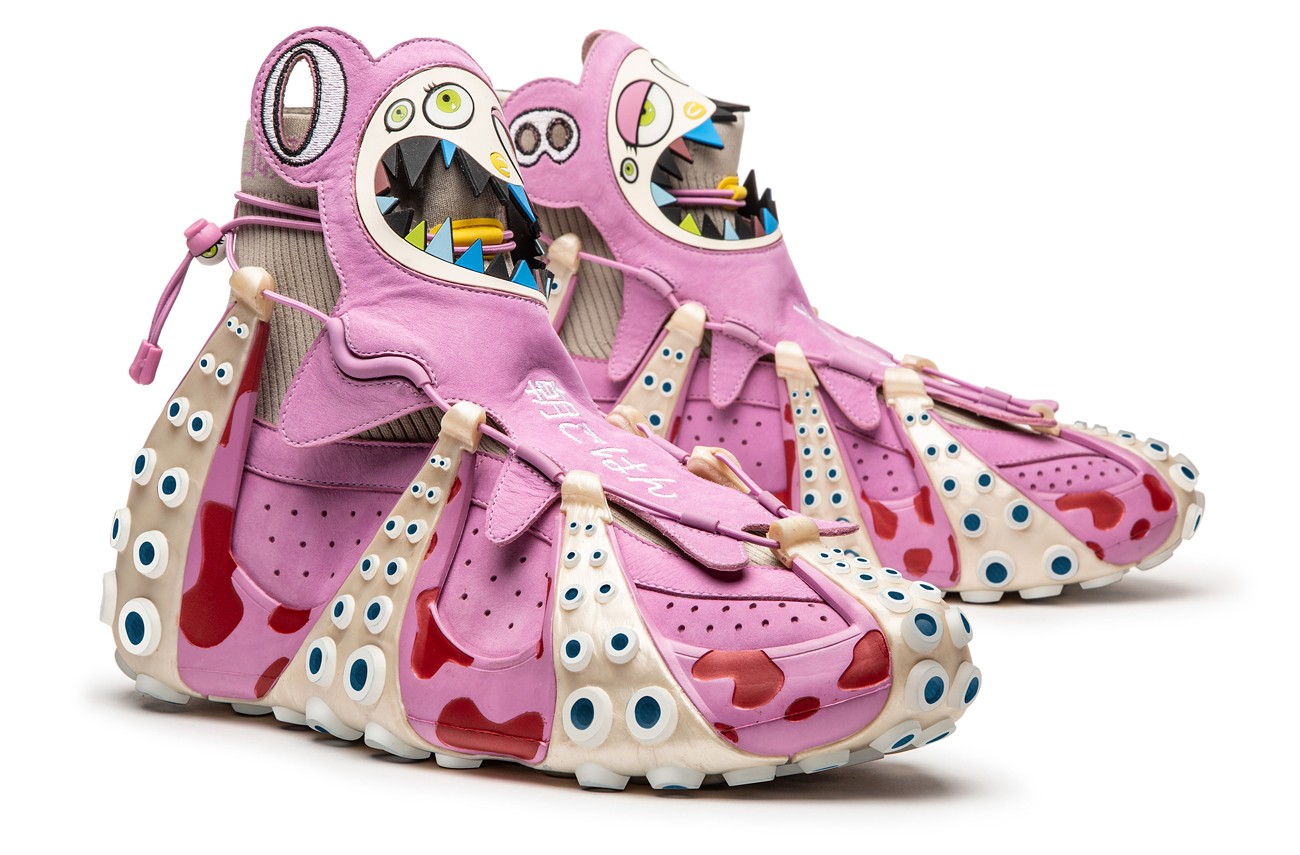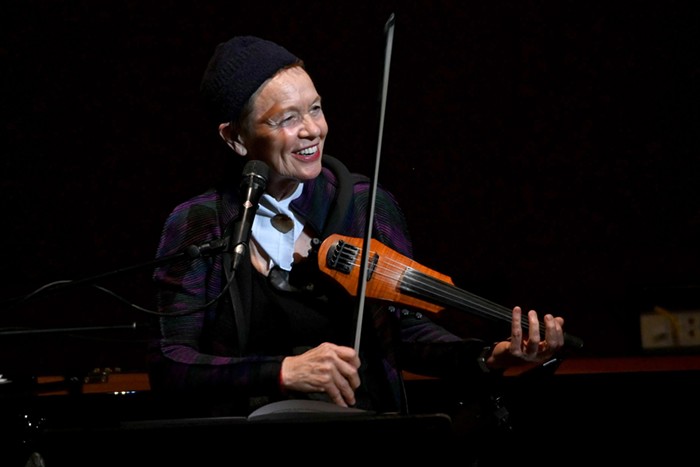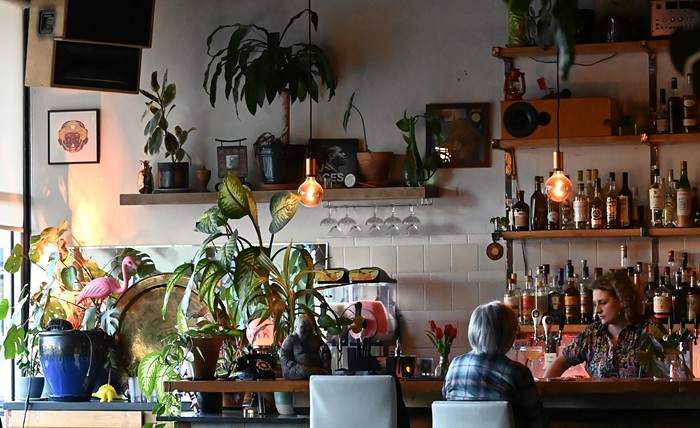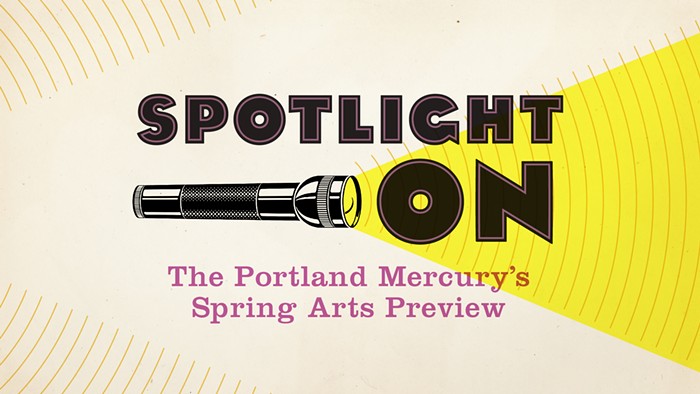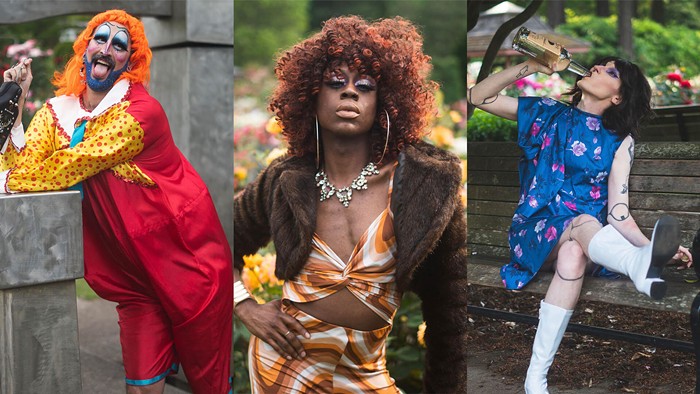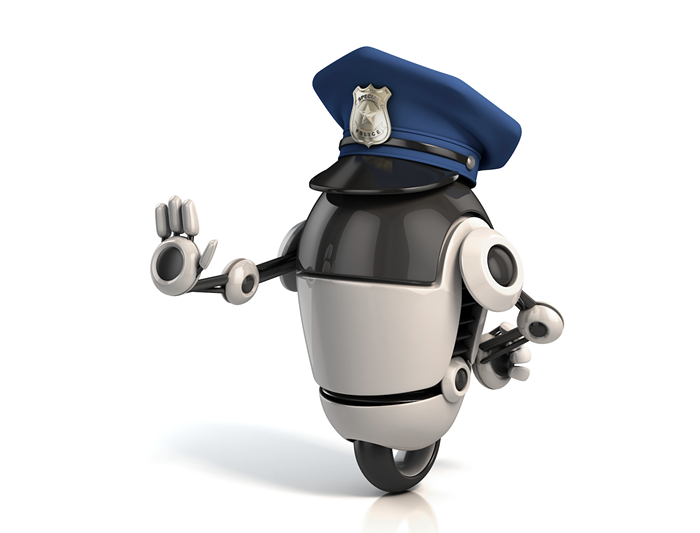The Mercury's 2024 Spring Arts Preview: Spotlight On!
Portland's premiere bingo queen and the soon-to-arrive avant garde sneakers show are ready for their close up.
Peachy Springs Is Portland's Premiere Hard-Working, Foul-Mouthed Bingo Drag Queen
They play for two tight hours and cash prizes. They stay for Springs’ delightfully abusive crowd work.
EverOut's Guide to Spring 2024 Arts Events in Portland
If you’re looking for upcoming films, dance, talks, or live music the Mercury has you covered—better than your sunblock.
Five Laurie Anderson Songs That Aren’t “O Superman”
There’s more to this trailblazing musician than the TikTok-famous track; let us guide you.
Spring 2024 Gallery Shows in Portland: A Chorus of Art About Work
Great curations from Jeremy Okai Davis and Morgan Ritter, and the upside down server case we all can't stop talking about.
Portland Has Two Great Listening Bars, Both Alike in Dignity
We compare Sonder Listening Bar and Decibel Sound & Drink, and recommend they swap names.
Future Now at Portland Art Museum Unboxes the Future of Sneakers
Get comfy, folks; the future of sneakers is heady as all hell.
On March 30th, the Portland Art Museum will raise the curtain on Future Now: Virtual Sneakers to Cutting-Edge Kicks, a new exhibit about the various futures imaginable for the world’s most versatile sporting footwear. Our city is the touring exhibition's first stop following its premiere at the Bata Shoe Museum in Toronto.
This feels appropriate since Portland—the birth home of Nike and the American home of Adidas—made the sneaker as we know it today: the omnicultural all-use-all-color-all-people footcage that drives the sneaker-man wild and dominates the field, court, and street alike.
A book designed around the show, written by curator Elizabeth Semmelheck, begins with a material history of shoes and shoemaking—wherein the personalized artisanship of the cobbler dominated the field for many centuries, but was overthrown and tossed into the street by the industrial revolution. The invention of sewing machines, rubber vulcanization, and vinyl made mass market footwear de rigeur by the middle of the 19th century. The 20th century invention of mold injection technology brought the jelly sandal and the classic chunky-heel Doc Martin boot to market.
In the '70s, running and jogging—professional and amateur manifestations of ‘People trying to go fast”—were alternately stoked and fed by Adidas, Nike, and other shoe companies on a desperate, neverending hunt for lighter, more supportive, more breathable designs and materials. In the '90s, Michael Jordan happened. Because he seemed like he was from space and people desired a piece of his immaculate energy, Nike was driven to make new and wilder manifestations of the Air Jordan every year, and every other sneaker company and major NBA athlete followed in their footsteps. Then, in the aughts, advances in foam injection tech made the Nike Foamposite, sacred camp object, and chefware staple Croc sandal possible.

The best parts of the exhibit root themselves in the question of how new material sciences and cultural priorities have driven the shoe object in the recent past and might drive the form in the near future. You’ll see funky multi-colored sneakers made from tightly cross stitched threads, big black high fashion boots made by manipulating iron fillings inside of injected resin, 3D-printed shoes, and wool running shoes, among other things.
When we asked what material advancement on display was going to go off in the near future, Semmelheck didn’t even think: “Mushroom leather is going to change everything," she said. "It has not been brought to scale yet, so it is not currently a viable material, but it will be in short order. One of the things people have wanted to do and have been unsuccessful at doing is making a leather substitute." There are plenty of reasons why leather has endured, despite being terrible for the environment (and cows). "It is a very breathable material," Semmelheck explained., "it’s very durable, it conforms to our feet after a while, so it makes for comfortable footwear.”
Future Now also looks at the future of footwear in digital spaces, and I found the exhibit's handling of NFTs, ‘Metaverses,’ spaces where you need a public facing avatar, video games, or what have you unimpressive. NFT madness was one of the worst things I have ever been exposed to; it was a pure form of commodity fetish that existed without a commodity whatsoever.
Semmelheck told me that when she was initially curating the exhibit NFTs were on the peak, and that their inclusion is reflective of that. “Ten years ago, when my eldest would have their friends over, they would spend SO MUCH time dressing the avatars of their characters, almost as much time as they spent playing the game," she explained. "This is a completely artificial space, and yet self representation within that space is of prime importance."
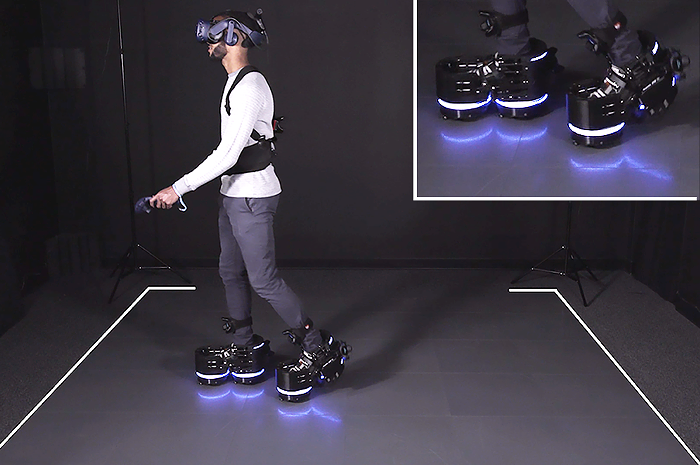
“It is a new space," Semmelheck said, "and in those new spaces we could, if we chose, do something very interesting. We could challenge all kinds of limitations of our physical bodies, and of how society requires us to function. That is not what has played out in the last couple years.” She is as suspicious of brand interference in digital spaces as someone could be, and even suggested that the expansion of the visual and style life of the internet has, in fact, been regressed by the interference of brands, whose wolfing around the space has made it seem more crass than it necessarily needs to be. “We don’t have our bodies, we don’t have to bring any of those issues with us. But what I am seeing is that we are simply replicating, and that those things,’ virtual self representations, ‘are being commodified.”
A world where sneaker culture has migrated online is interesting, and worth noting, but not necessarily good.
In 2020, during peak Covid madness, Semmelheck, like many other people, took up with Animal Crossing, Nintendo’s half-world cultivating / half-design exercise simulator. “I started to collect shoes, and I turned my house into a shoe museum,” she said, essentially rebuilding her job on a digital medium while she was separated from it by nature’s viral raging. In turn, I remember during my personal dalliance with the game, I became fixated on acquiring in-game music celebrity KK Slider’s records and hanging them on my wall, a simulacrum playing of my OWN occasional fixation on record collecting.
Digital spaces cry out for the replication of the material world, even though they don’t have to. The question of where their future is lies in the worlds populated by children who were raised online, in Fortnite madness, or the kaleidoscopic worlds of Roblox. But, Semmelheck claims, the offramps that older people, ones more adapted to a material world, take into these spaces run through our shared material realities, for better or for worse.
Future Now: Virtual Sneakers to Cutting-Edge Kicks is on display at the Portland Art Museum, 1219 SW Park, March 30–August 11, included with general admission, hours and more info at pam.org
